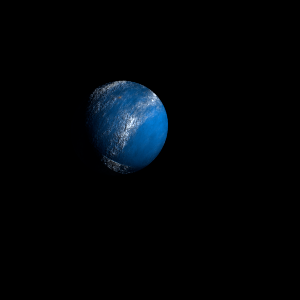|
|
Space Astro
|
Info for exoplanet "Mesopehya"
| Scientific (actual) data |
|---|
| Planet | EPIC 211442297 b |
| Planet status | Confirmed |
| Planet mass | 0.84 |
| Radius | 1.115 |
| Orbital period | 20.273 |
| Semi major axis | 0.1367 |
| Orbit eccentricity | 0.137 |
| Inclination | 88.82 |
| Discovered | 2017 |
| Updated | 2018-05-04 |
| Omega | 104 |
| Tzero tr | 2457160 |
| Impact parameter | 0.702 |
| K | 77 |
| Publication | Published in a refereed paper |
| Detection type | Primary Transit |
| Mass detection type | Radial Velocity |
| Radius detection type | Primary Transit |
| Alternate names | K2_215 b |
| Star name | K2-115 |
| Right ascension | 126.55° |
| Declination | 12.28° |
| Mag j | 12.108 |
| Mag h | 11.76 |
| Mag k | 11.72 |
| Star distance | 418.58 |
| Star metallicity | -0.1 |
| Star mass | 0.95 |
| Star radius | 0.88 |
| Star sp type | G4 |
| Star age | 10.7 |
| Star temperature | 5657 |
| Star alternate names | 2MASS J08261282+1216550, EPIC 211442297, WISE J082612.83+121654.7 |
| Wikipedia article | EPIC 211442297 b |
Back
| |
| Fictional info (?) |
|---|
| Suggested name | Mesopehya |
| Planet type | Terrestrial |
| Orbiting within Kucho Roshu's orbit, Mesopehya is an inferior planet and never appears to venture far from K2-115; its maximum angular distance from K2-115 (elongation) is 84 degrees.
The planet is named after the deity Mesopehya, the spirit of the sea.
Like Kucho Roshu, Mesopehya has been orbiting K2-115 for 11 billion years, and never moves more than 13 degrees away from K2-115.
Mesopehya is gravitationally locked with K2-115 in a 3:2 spin-orbit resonance, and rotates in a way that is unique in its solar system.
Mesopehya's surface appears quite bruised and is similar in appearance to the Moon's, indicating that it has been geologically inactive for billions of years.
Mesopehya can easily be seen from Kucho Roshu with the naked eye, as can its orangeish coloring.
The Mesopehya system has a unique configuration among those of the planets because its axis of rotation is tilted sideways, nearly into the plane of its solar orbit.
The surface of this inhospitable planet is dangerous because of the friendly but shy and primitive insects, the "Senajo'choka", which survive at the sea by finding nourishment in smaller pray if the weather permits it. They are related to the Chobi-kyo but have 3 eyes and vary in length from 40 to 80 mm. Senajo'choka can thrive at temperatures from 140 to 200°C and predators attacking which is common near the poles. |
| Estimated population | 800000 |
| Atmosphere | Water | 44% |
| Carbon dioxide | 44% |
| Methane | 7.3% |
| Oxygen | 4.3% |
| Atmospheric pressure | 0.9 bar |
 |
| No known satellites |
| Google search for Mesopehya |
|
Website by Joachim Michaelis
|
|
|
|